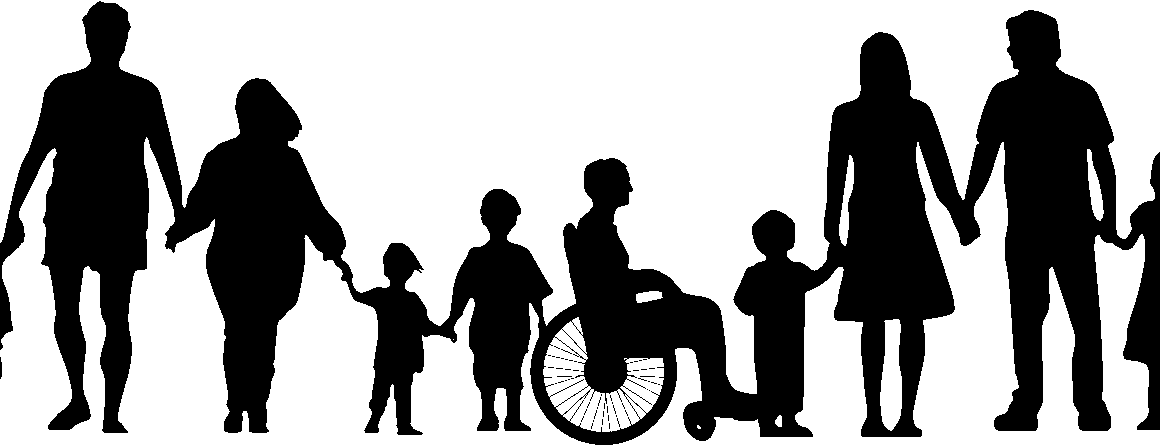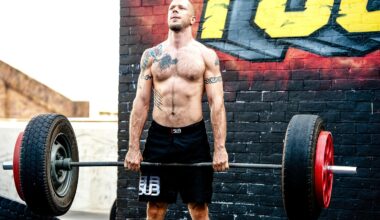Partnering with Disability Advocacy Groups for Fitness Inclusion
Fitness inclusion for individuals with disabilities is crucial for enhancing their overall well-being. By collaborating with disability advocacy groups, fitness professionals can create accessible programs that cater to diverse needs. These groups play a key role in educating fitness providers about the specific challenges faced by individuals with disabilities. Understanding these challenges helps in developing tailored fitness programs that foster inclusion and participation. Moreover, partnering with advocacy groups allows fitness facilities to gain insight into the community’s desires regarding adaptive fitness programs. By implementing feedback from these groups, fitness centers can ensure their offerings are inclusive and widely accessible. Engaging these communities also aids in empowering individuals with disabilities to pursue fitness goals, thereby promoting a healthier lifestyle. Furthermore, outreach efforts should focus on building strong relationships that encourage consistent dialogue between fitness organizations and advocacy groups. This collaboration not only raises awareness of adaptive fitness but also enhances program effectiveness. Ultimately, the mutual goal is to create environments where individuals feel welcome and supported, leading to long-term adherence to fitness activities and healthier life choices for everyone, regardless of ability.
Disability advocacy groups serve as vital partners for improving fitness inclusion strategies. Their expertise helps fitness professionals understand the importance of accessibility measures. Accessibility involves more than just physical adaptations, but also creating a welcoming and supportive atmosphere. Fitness centers must ensure that all staff receive training on inclusive practices. This could involve workshops that promote sensitivity and awareness around disability issues. Moreover, advocacy groups can assist in the development of adaptive fitness classes tailored to various disabilities. This ensures that programs are not just an afterthought but are integral to the fitness organization. By fostering collaboration, fitness centers can identify necessary modifications to equipment and environments. Accessibility audits are one way these partnerships can yield specific recommendations. These audits assess how well facilities meet the diverse needs of individuals with disabilities. Involving user feedback will lead to prioritized changes that genuinely enhance usability. It is also essential to explore funding opportunities for specialized equipment. Financial support can significantly expand the range of adaptive fitness services offered, ensuring programs can accommodate as many participants as possible.
The Role of Community Engagement
Engaging the community is paramount for building sustainable adaptive fitness programs. Collaborating with disability advocacy groups not only raises awareness but also fosters participation. Implementing community events can serve as great platforms to showcase inclusive fitness programs. For example, organizing fitness fairs that feature adaptive classes allows individuals to experience such offerings firsthand. These events can connect people with disabilities to trainers experienced in adaptive techniques. Additionally, showcasing success stories during these events can inspire others. By highlighting personal journeys, organizations can demonstrate the transformative impact of fitness on quality of life. Furthermore, opportunities for networking among participants can emerge. Building connections often leads to strong peer support networks, which are crucial for motivation. Community engagement also extends to social media. Utilizing platforms to share resources, testimonials, and information about upcoming adaptive fitness events can enhance outreach efforts. Engaging local businesses can lead to sponsorship or partnership opportunities that further boost resources. Overall, fostering a sense of community inclusivity is vital to encourage participation from diverse populations and to develop long-lasting adaptive fitness initiatives.
Another important factor in partnering with advocacy groups is advocacy itself for policy changes. Collaborative efforts can aim at influencing local policies related to fitness access and inclusion. These policy changes can help create funding for adaptive sports or fitness initiatives. Additionally, they can ensure that newly built fitness facilities incorporate accessible design principles from the outset. By working with advocacy groups, fitness organizations can boost their lobbying power, creating a unified voice for change. Joint campaigns can also highlight the need for enhanced accessibility across various fitness sectors. Ultimately, a collective approach can yield institutional support that significantly impacts community health. Moreover, organizing workshops with advocacy groups can equip fitness centers with tools to lobby effectively. Understanding legislative processes can empower fitness providers to advocate for needed modifications. Creating a synergy between local governments and fitness providers may lead to successful initiatives fostering inclusive environments. These strategies underscore that true fitness inclusion necessitates a multilateral approach that combines resources and influence from all stakeholders. Comprehensive strategies enable fitness to be perceived not just as a right but as an essential component of health for everyone.
Resources and Tools for Success
Partnering with disability advocacy groups also provides valuable resources and tools for success. These partnerships grant access to training materials designed specifically for inclusive fitness practices. Advocacy organizations frequently produce guides detailing best practices for fitness professionals. This can encompass recommendations for adaptable equipment, programming ideas, and behavior management strategies. Accessing these tools can significantly enhance service delivery quality. Educational sessions and workshops tailored to fitness staff can provide ongoing training opportunities that build proficiency in adaptive fitness. Furthermore, resource networks established through these collaborations can facilitate sharing of innovative ideas among professionals. Engaging in forums or online platforms where fitness professionals exchange experiences proves beneficial. Additionally, marketing adaptive programs can leverage joint resources for greater visibility. Advocacy groups often have extensive networks that can aid in promoting fitness programs. Utilizing these networks can enhance outreach efforts and increase participation rates. Moreover, resource sharing can extend beyond merely marketing materials; it’s about creating an ecosystem of support. As knowledge grows, so does community engagement, leading to a robust system for adaptive fitness that addresses diverse needs and circumstances. A culture of continuous improvement in adaptive fitness thereby emerges.
Fitness assessments conducted with guidance from advocacy groups can ensure individuals receive personalized programming. Understanding specific physical needs is central to providing effective adaptive fitness services. Assessment processes can help determine appropriate starting points, safety considerations, and goal-setting strategies that align with each participant’s unique circumstances. Additionally, adapting evaluations over time is crucial, allowing for relevant modifications as individuals progress. Regular follow-ups organized through fitness partnerships can offer individuals additional support. Accountability is critical in motivating individuals to reach their health goals, and these partnerships can create mechanisms for regular check-ins. Providing a nurturing environment that encourages feedback also strengthens relationships between practitioners and participants. Ultimately, fitness assessments are a critical component in bridging the gap in adaptive fitness programs. This helps ensure that they remain relevant and effective. Incorporating assessments into regular programming can show individuals their progress, serving as inspiration. Additionally, recognizing the importance of mental well-being alongside physical capabilities ties into holistic health approaches. By fostering a community that recognized varying abilities, all individuals can feel empowered and driven to achieve their fitness aspirations.
Conclusion: The Path Forward
In conclusion, the partnership between fitness organizations and disability advocacy groups is vital for promoting fitness inclusion. By collaborating, they can create an inclusive atmosphere that benefits everyone. These partnerships empower individuals with disabilities to pursue and achieve their fitness goals while creating a culture of mutual respect. Programs designed with input from advocacy groups are more likely to align with community needs. As fitness facilities embrace adaptive practices, they foster broader social inclusion and acceptance. Fitness professionals must actively engage with advocacy groups to learn more about the dynamic and evolving needs of the community they serve. Long-term success relies on continuous collaboration and open dialogue to address challenges collectively. Ultimately, creating inclusive fitness environments will contribute to overall health improvements within communities. By recognizing individuals’ right to access fitness opportunities, society fosters environments that empower all individuals, regardless of ability. Striving for adaptive fitness inclusion not only benefits individuals but also enriches communities as a whole by promoting diversity and belonging. Together, advocacy groups and fitness organizations can lead the way towards a more inclusive and healthier future for everyone.
Continuously evaluating adaptive programs is integral as it helps identify areas for improvement. Engaging users in this evaluation process can provide insightful feedback, creating a cycle of growth. Regular assessments ensure that offerings remain relevant and effective. By actively listening to individuals’ experiences, fitness organizations can adapt to changing needs. Ongoing training for staff also ensures they remain knowledgeable about best practices in adaptive fitness. This dedication to quality encourages community confidence in the fitness facility. Creating forums for user discussions fosters engagement and allows individuals to feel heard. Therefore, developing strong relationships between fitness providers and participants is paramount. Additionally, understanding the impact of adaptive fitness on mental health is essential as well. This aspect should never be overlooked, enhancing the overall mission of inclusion. Ultimately, these combined strategies contribute to a sustainable model of adaptive fitness that meets the needs of today while also anticipating future challenges. Continuous learning and adaptation, alongside strong partnerships with advocacy groups, lay the foundation for a thriving, inclusive fitness environment. Building momentum in this direction will ultimately create lasting change, ensuring healthy opportunities for all individuals.


